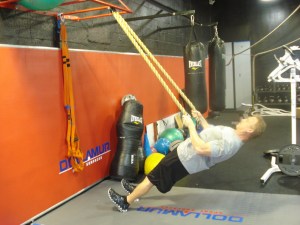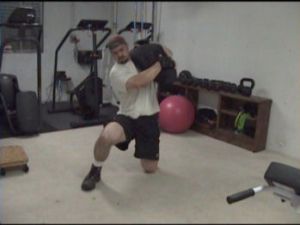
My good friend Adam wrote this on his site: fivetoolbaseball.blogspot.com.
Even though the article is written for baseball the principles are applicable to any activity and to life in general!
As many baseball purists are aware, baseball players are evaluated utilizing the measuring stick known as the five tools: hitting for average, hitting for power, running speed, arm strength, defensive skills. Complimentary to these five tools, are a series of 5 training protocols collectively known as ‘Training to the 5th Power’ (T5). Based upon the explosive and power nature of baseball, I believe that by following the five training protocols will transfer off-field training to on-field performance.
THE PROTOCOLS ARE:
(1) Train standing;Training from standing positions trains the movements unique to baseball along with the respective muscle groups. Baseball players rarely rely on strength from sitting or lying down positions;yet exercises performed from such positions continue to dominate training programs. Utilizing modalities such as bands/cables from standing positions can target the same muscle groups typically trained from sitting or lying positions all the while training movements beneficial to baseball.
(2) Train with free weights; Free weights allow for multiple ranges of motion and multiple planes of motion(movement). Training with free weights, such as dumbells, allows for a bit more freedom of movment, unilateral training which can identify muscular imbalances between limbs,and builds neuromuscular efficiency (coordination of muscle groups). In addition, training with other free weight objects, such as medicine balls, provides power development. The ability to toss a free weight, such as a medicine ball, in a manner similar to hitting increases power potential of the muscles involved; making free weight objects superior to machines in replicating and increasing power.
(3) Train multi-joints – a.k.a compound movements; Movements involving more than one joint are referred to as compound movements. Multiple joint training allows for greater loads to be trained, therefore greater muscle recruitment, leading to greater strength development. I cant think of any movement in baseball that doenst involve the total body. Thus compound movements can deliver fluidity for on field performance…more so than single joint movements. In addition if your athlete needs to drop a few pounds then multi-joint, baseball specific movements can assist with increasing caloric expenditure.
(4)Train explosively; Slow and controlled movements are great for developing a certain level of strength. However, most baseball movements, even though strength based, are just as dependent on speed and power.Power can be defined as: POWER = WORK / TIME or POWER = FORCE x SPEED
Notice how power is dependent on speed. And the speed component explains the importance of explosive training for developing on-field, optimal baseball power.
(5) Functional Training (FT);Functional training is based upon training movements and not body parts. FT trains multiple planes of motions, in unstable environments, at baseball specific speeds. Basically, FT is “train like you play”. Functional Training supports the other T5 principles: Training in a standing position is functional for on-field activities; Training with free weights allows functional training along any plane and at any speed; Multiple joint, compound movement training is the way baseball is played, therefore functional. Much of how baseball is performed is power dominated, so training explosively becomes functional.
All in all implementing the T5 training guidelines are ideal for building overall baseball performance. However, like other training concepts,thereare exceptions in exchange for other effective results. For example, slow, isolated work in stable positions (i.e. lying down,) just might be necessary for the athlete needing a bit more muscle (hypertrophy). Take special note that although bodybuilders look great, I dont recommend an all exclusive use of bodybuilding methodologies for improving on field, baseball performance. The question which would you rather train for “all go” or “all show”?
Regardless of the type of training incorporated into your program, the majority should fall within T5.
As Adam always says: Go hard in the yard!
Get Strong! Stay Strong!
Chris

















